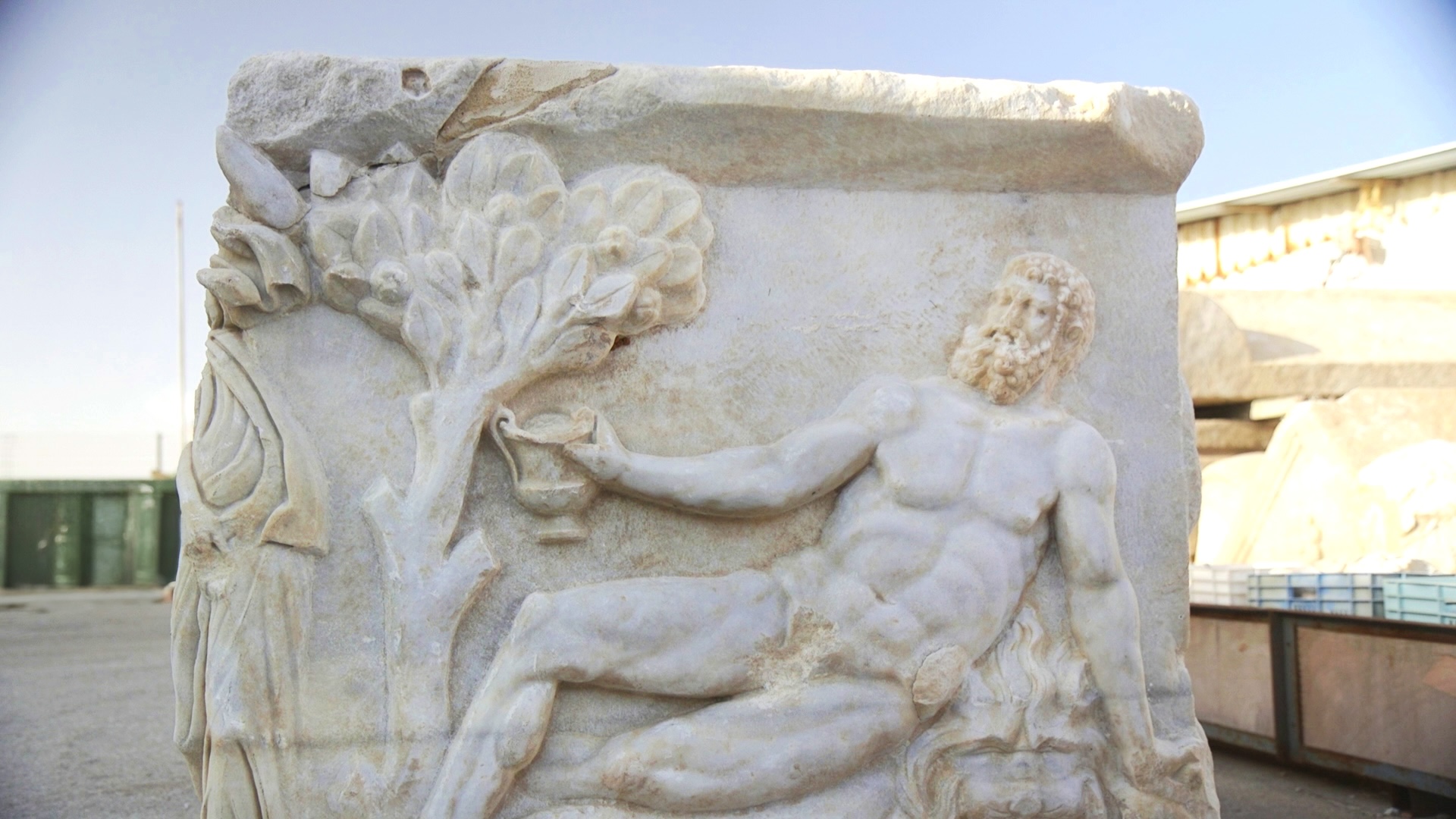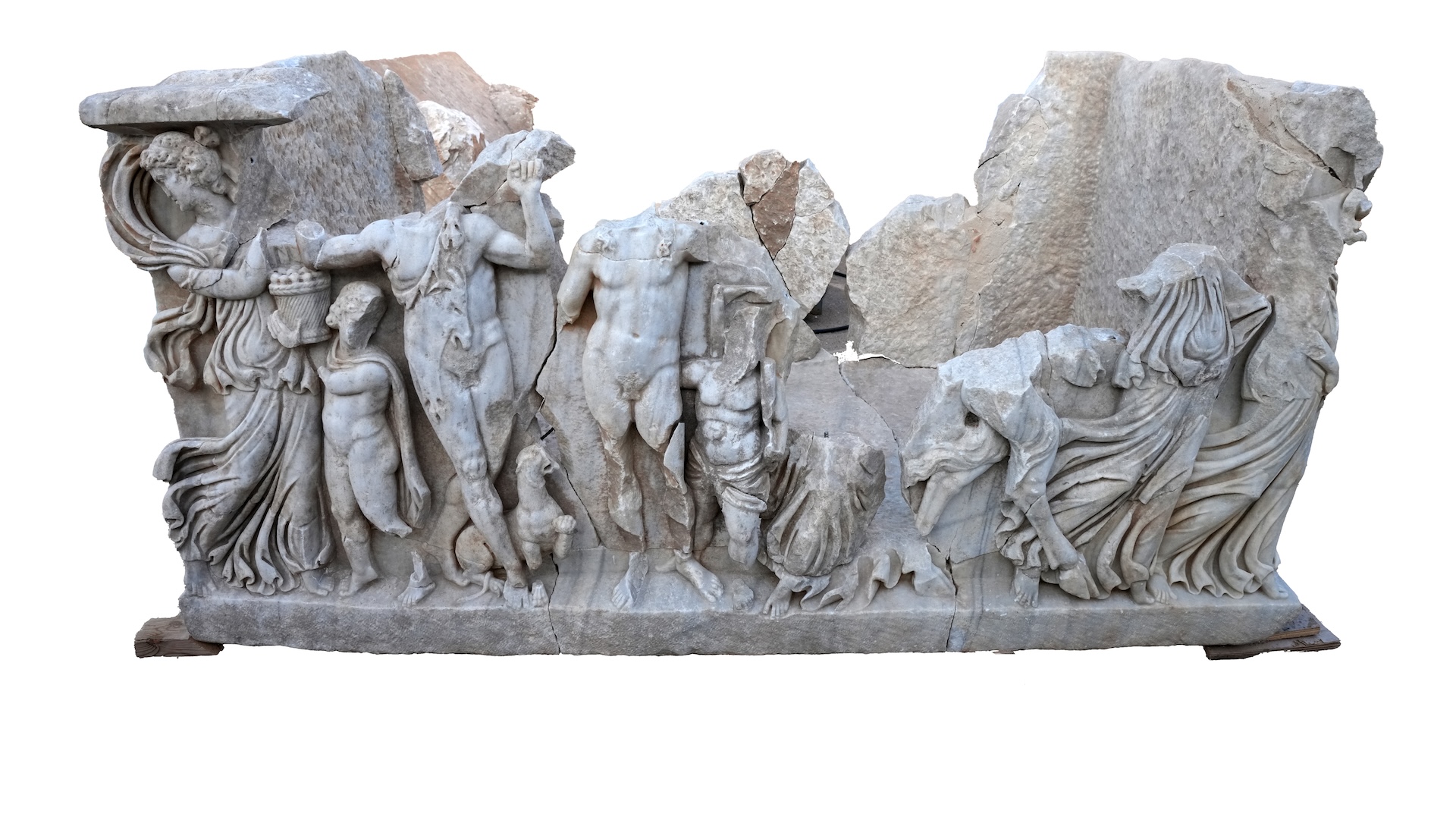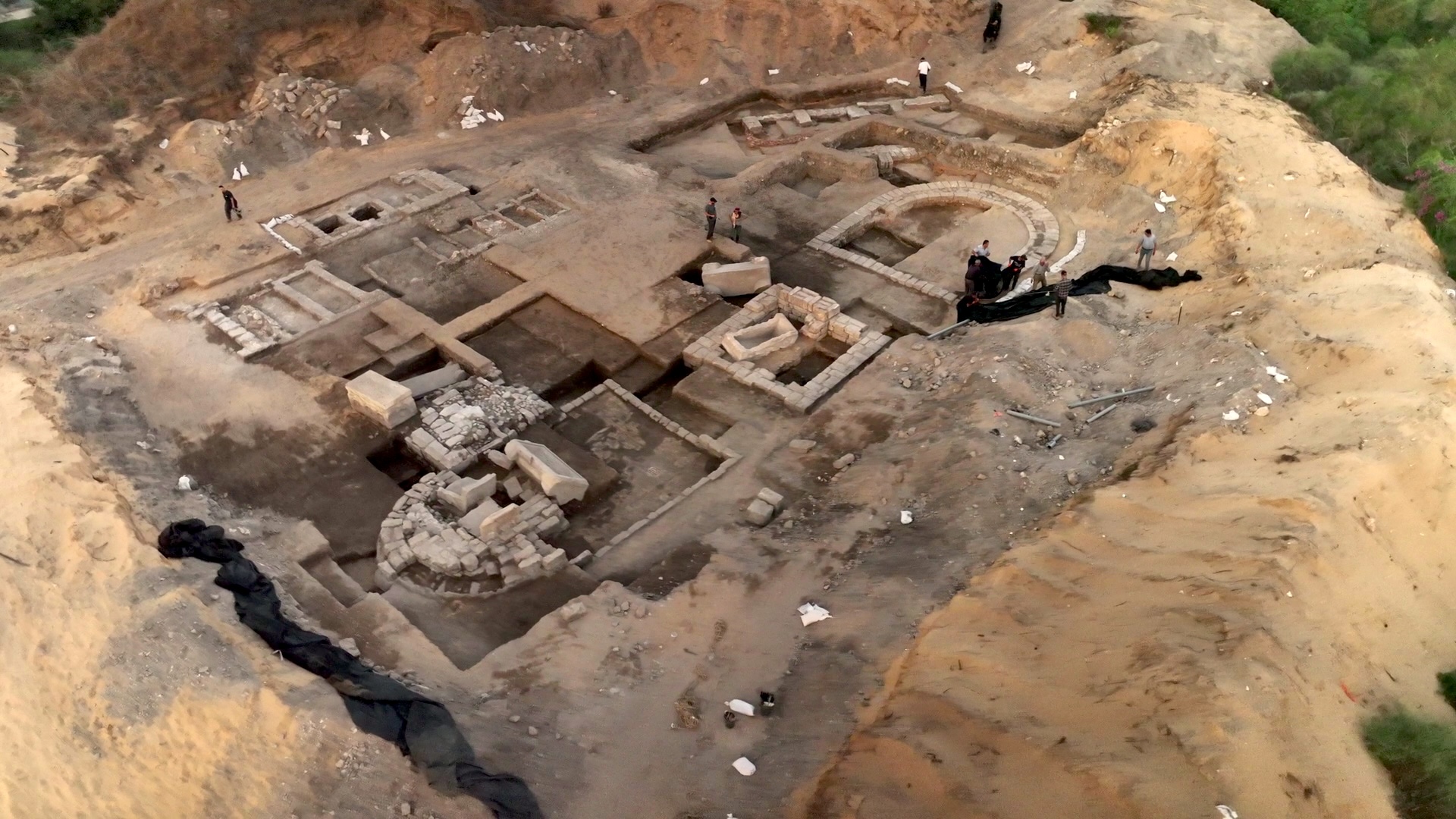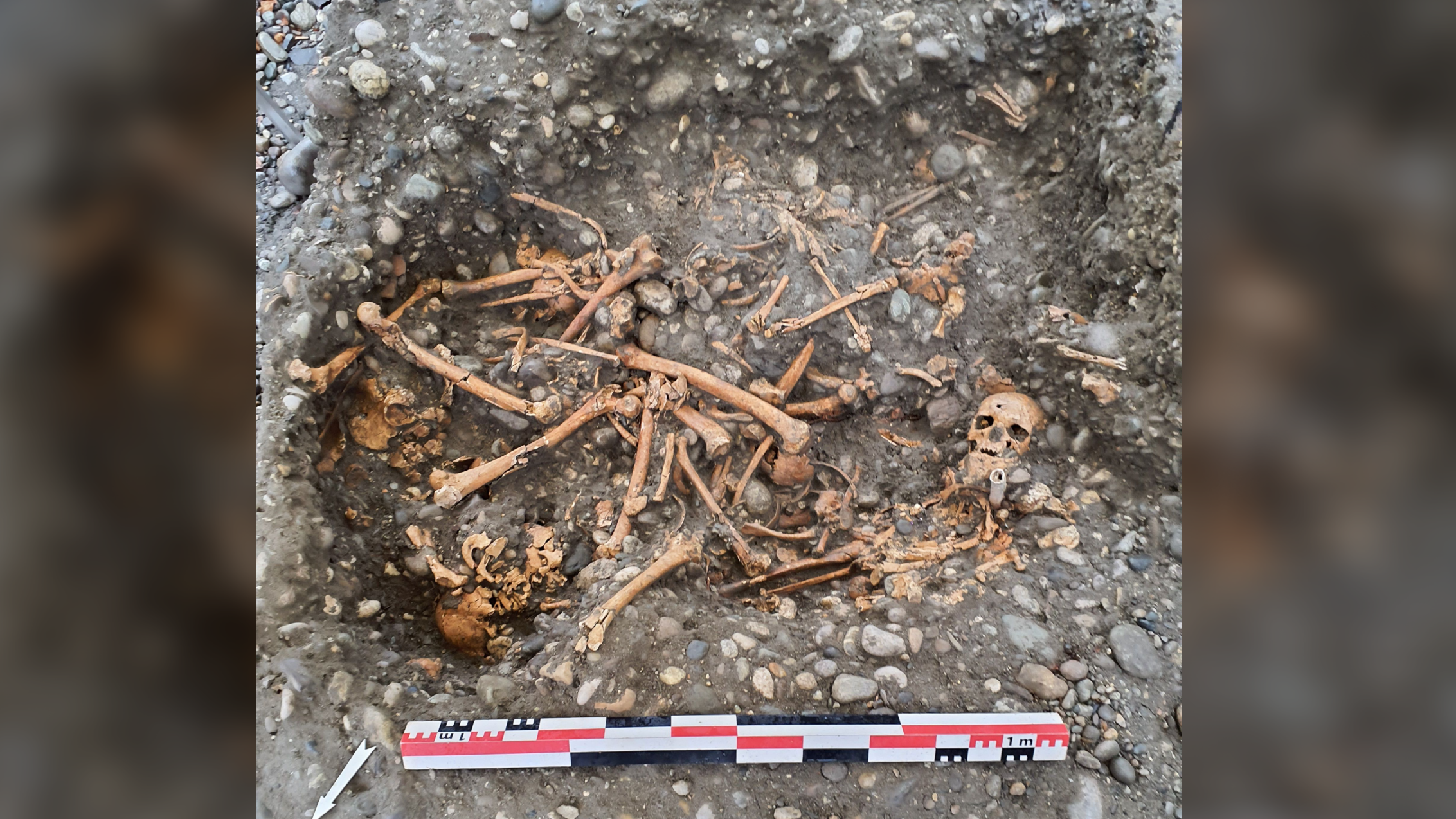'Extraordinary' sarcophagus discovered in Israel shows carving of Dionysus beating Hercules in a drinking contest
Archaeologists in Israel have unearthed a Roman-era sarcophagus that depicts Dionysus beating Hercules in a drinking contest.

A 1,700-year-old Roman sarcophagus depicting a legendary drinking contest has been discovered in Israel, the Israel Antiquities Authority (IAA) announced Monday (June 9).
Archaeologists uncovered the artifact, which dates back to the second or third century A.D., near the ancient city of Caesarea along the country's northwest coast. The carved marble depicts a drinking contest between the demigod Hercules and Dionysus, the Greek god of wine and parties, who is equivalent to Bacchus in the Roman pantheon. Though similar scenes appear in mosaics from the same period, the find marks the first appearance of this particular story on a sarcophagus from the region.
"This sarcophagus is an extraordinary work of art," Mark Avrahami, head of artistic conservation at the IAA, said in a translated video. "There are not many sarcophagi like this, even in the world."
The 1,700-year-old sarcophagus was buried beneath a sand dune and fractured into pieces when archaeologists uncovered it as part of a series of excavations of the city. After the pieces were excavated, conservators cleaned and reassembled the parts to reveal the full scene.
One unbroken side of the marble coffin shows Hercules depicted lying on a lion skin. "He's at the end of the contest holding a cup of wine in his hand, and of course he's in this position because in the contest Dionysus, the god of wine — whom no one can defeat — emerged victorious," Nohar Shahar, an archaeologist with the IAA, said in the video.
Dionysus is shown as part of a joyful procession, surrounded by satyrs, female followers and Pan, the god of the wild. "In this case, it seems that the figures are not only celebrating — they are in fact accompanying the dead on his last journey, when drinking and dancing are transformed into a symbol of liberation and transition to life in the next world," Shahar said in a statement. "This sarcophagus offers an unusual perspective of the idea of death — not as an end, but as the beginning of a new path."

How the marble sarcophagus looked after its preservation.

Archaeologists found the sarcophagus in this excavation site outside the ancient walls of the city of Caesarea.
Archaeologists found the sarcophagus outside the walls of Caesarea, an ancient city by the Mediterranean Sea, alongside other marble slabs with names inscribed on them. These discoveries suggest that Caesarea wasn't only confined to within its walls, and that the surrounding area was more densely populated and rich in artifacts than archaeologists previously thought, Shahar said in the video.
Get the world’s most fascinating discoveries delivered straight to your inbox.
"This is a thought-provoking discovery reflecting how life and faith were perceived in the Roman world," IAA director-general Eli Escusido said in the statement.
The sarcophagus is undergoing thorough conservation before being made available for public viewing.
Roman emperor quiz: Test your knowledge on the rulers of the ancient empire

Skyler Ware is a freelance science journalist covering chemistry, biology, paleontology and Earth science. She was a 2023 AAAS Mass Media Science and Engineering Fellow at Science News. Her work has also appeared in Science News Explores, ZME Science and Chembites, among others. Skyler has a Ph.D. in chemistry from Caltech.
You must confirm your public display name before commenting
Please logout and then login again, you will then be prompted to enter your display name.


